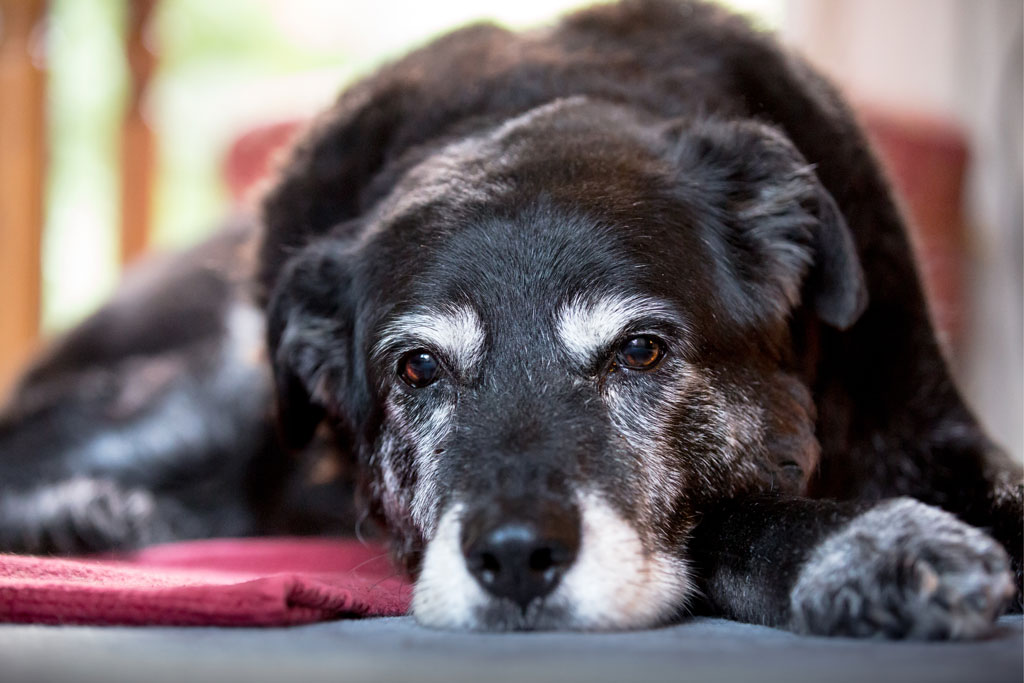Osteoarthritis is a huge problem in dogs and cats and often goes unrecognised. Some recent studies suggest 80 per cent of dogs over eight years of age have osteoarthritis, and as many as 90 per cent of cats over 12 years of age have some degree of osteoarthritis. There are 4.8 million dogs in Australia. This gives you an idea of the size of the problem.
Still, it’s a problem that pet owners are just getting used to, as pets spend so much time as part of our family now, and we are much more bonded to them. With improved veterinary knowledge and medicines, our pets are living longer than ever.
Age is certainly one of the predisposing factors, but it is not the only factor. In dogs, for example, the size of the dog is important. Some larger breeds are more predisposed than others. Other factors include any sort of trauma, like a previous joint injury or a broken leg.
One of the most important predisposing factors is body weight. Being overweight is not only an important factor—it is one we can actually control in relation to them avoid developing osteoarthritis.
What does osteoarthritis in pets look like?
So how do you tell if your pet has a problem with osteoarthritis? The classic sign people expect will be limping or showing some form of joint pain when they are walking. While lameness and joint swelling are the classic signs, there are certainly a whole lot of other more subtle signs that we might see. The signs, particularly in cats, can also be much more subtle than that.
Cats are very good at disguising pain. It is in their interest from an evolutionary point of view to not let any predator know they are in pain. So sometimes in cats we might see subtle changes like urinating inappropriately, or not wanting to walk downstairs, or hiding under things.
The treatment and the cure
The best way to avoid joint problems with your pets is to watch their weight. Any extra weight they are carrying will make health issues much worse. This is true for arthritis as well as other metabolic diseases we see. There has been some research that suggests for each additional kilo your pet carries, it puts four times the load onto a knee joint. So, they don’t need to be carrying much extra weight to be putting a lot of extra pressure onto joints that might already be compromised.
I can’t stress enough, weight controlling and having your pets, both dogs and cats, within a healthy weight range is really important as a preventative measure for many different diseases.
If your pet already has joint problems, one of the first things we need to think about is pain relief. We want to make sure these pets are comfortable.
Weight management is also important. We need to get a good weight management program in place. Then, we need to start thinking about how we manage their exercise going forward and whether they need physiotherapy.
Diet supplements play a role as well. The nutraceuticals that are widely used in human medicine—the joint supplements, chondroitin supplements and green-lipped mussels—are also really beneficial for our animal friends. We need to take all of these factors into account and build an individual plan for each animal.
There are some conditions where surgery is appropriate. It may be needed to either stabilise the joint or to help remove cartilage fragments from within the joint. They would be quite specialised osteoarthritis conditions, but it is something that forms part of the whole picture about treatment and management of osteoarthritis.
Manage exercise
It is ironic that, once osteoarthritis has progressed to a certain point, exercise is no longer a solution. If we have a dog that has severe arthritis, then too much exercise is actually not going to help. We would not rule it out, but it has to be specific to the case and appropriate as part of our whole plan with pain relief and anti-inflammatories.
In cats we tend to find if we can help with the pain and use various nonsteroidal anti-inflammatories, then they will be more likely to do their normal exercise.
While we can’t actually put in place an exercise program for them, we can make sure their weight is appropriate. It comes back to setting a target weight and putting some really good weight management plans in place to get them to where they are more comfortable. Then their natural instincts will kick in and they will exercise more at that point.
Remember, a fat, sleepy pet is not a happy pet.
